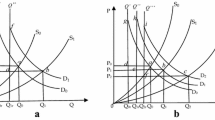Abstract
This paper examines the changes in dry land agriculture between 1975 and 2004, drawing both from macro-level data as well as the Village Level Studies (VLS) data of ICRISAT from six villages in Maharashtra and Andhra Pradesh. The long-term panel data facilitate an indepth analysis of cropping patterns, productivity levels, costs and returns of crop enterprises over time. The contrasting findings about increasing asset prices and declining returns to land and management puzzle the analysts. Equally implausible are the non-viability of agricultural enterprises on one hand and increasing incomes and living standards of the farm house holds on the other. Yet the SAT areas record highest incidence of poverty among the different agroclimatic regions of India. There is a clear dividing line between dry land agriculture and irrigated agriculture in terms of productivity levels, viability, indebtedness and poverty incidence. The government has come out with relief packages for farmers and employment guarantee programmes for the agricultural labourers in these areas. Besides such temporary palliatives, long-term policy biases which caused them need to be set right to make dry land agriculture in the SAT areas viable and competitive.
Cet article observe les changements dans' agriculture de zones arides entre 1975 et 2004 à partir de données d'ICRISAT provenant d'études macro et au niveau du village portant sur six villages du Maharashtra et d'Andhra Pradesh. Les données de panel portent sur le long terme, ce qui facilite une analyse en profondeur du modèle de culture, des niveaux de productivité, des coûts et des rendements des cultures à terme. Nos résultats suggèrent que les rendements déclinent et que l'activité agricole en zone tropicale semi-aride est devenue non viable. De plus, on enregistre dans ces zones les taux de pauvreté les plus élevés de toutes les différentes zones agro-climatiques de l'Inde. Il existe une délimitation claire entre l'agriculture sèche et l'agriculture irriguée en termes de niveau de productivité, de viabilité, d'endettement et d'incidence de la pauvreté. Nous défendons l'idée qu'afin de rendre l'agriculture sèche en zone semi-aride viable et compétitive, il est nécessaire de corriger des distorsions historiques dans la politique agricole indienne.
Similar content being viewed by others
Author information
Authors and Affiliations
Corresponding author
Rights and permissions
About this article
Cite this article
Rao, K. Changes in dry land agriculture in the semi-arid tropics of India, 1975–2004. Eur J Dev Res 20, 562–578 (2008). https://doi.org/10.1080/09578810802469366
Published:
Issue Date:
DOI: https://doi.org/10.1080/09578810802469366




